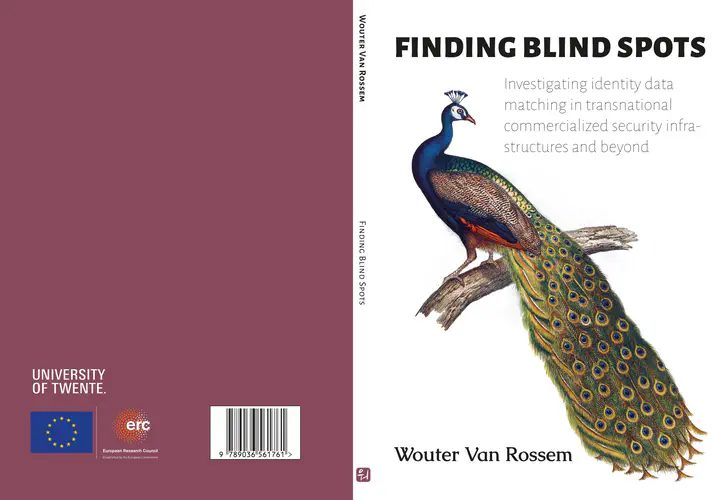PhD dissertation
 Photo credit: pxhere
Photo credit: pxhereSupervisors: Prof. Annalisa Pelizza (Universoty of Bologna), Prof. Stefan Kuhlmann and Dr. Ir. Maurice van Keulen (University of Twente).
This dissertation analyzes the interconnections between data matching technologies, identification practices, and transnational commercialized security infrastructures, particularly in relation to migration management and border control. The driving force behind this research was my curiosity about how identity data matching intersects with the “blind spots” that authorities often encounter when trying to identify individuals, particularly when faced with incomplete data, aliases, and other uncertainties. My goal was to address the following main research question: “How are practices and technologies for matching identity data in migration management and border control shaping and shaped by transnational commercialized security infrastructures?”
The dissertation commences by presenting an overview of the literature regarding the connections between data matching technology, which is used across various sectors, and its interrelationships with the internationalization, commercialization, securitization, and infrastructuring of identification infrastructure. This overview highlights a noticeable gap in the understanding of how data matching influences the meaning of the interconnected data and shapes relationships between organizations that use it. To address this gap, I propose using data matching as both a research topic and a resource for answering specific sub-questions related to specific aspects of data matching.
First, the dissertation focuses on how information systems’ data models play a crucial role in categorizing individuals and determining connections between different data models to match data. The analysis of this aspect of data matching is made possible by introducing the “Ontology Explorer” in Chapter 4, which serves as a novel method for examining the knowledge and assumptions embedded within data models. By applying this method to analyze national and transnational data infrastructures for population management, this method reveals authorities’ imaginaries on people-on-the-move. In this way, the method demonstrates the importance of data categories in data models, as they are crucial for data matching while also offering valuable insights into how authorities enact people in different ways.
Following that, the dissertation investigates how identity data matching is employed to re-identify applicants within a government migration and asylum agency. In Chapter 5, I introduce the concept of re-identification, which encompasses the continuing utilization and integration of data from diverse sources to determine if multiple sets of identity data refer to one individual. This chapter uses insights gathered from interviews with agency personnel to investigate the integration of data matching tools for re-identification. I argue that the pursuit of minimizing data friction in re-identification through data matching can also give rise to unanticipated challenges and costs for the agency’s staff.
Lastly, this dissertation examines the evolution of a commercial data matching system employed for identification and security objectives, adopting a sociotechnical approach. In Chapter 6, I introduce heuristics that are then used to identify moments that emphasize the design contingencies of the data matching system. By examining the fieldwork data gathered from the company that created the system, I show the influences of various actors and entities on the system’s design. Because of these influences, the system underwent contingent shifts from a generic data matching system to a specialized tool used for identification and security. In a broader sense, the research brings attention to the interrelationships among software suppliers, integrators, and customers, and the circulation and use of knowledge and technology for matching identity data across organizations.